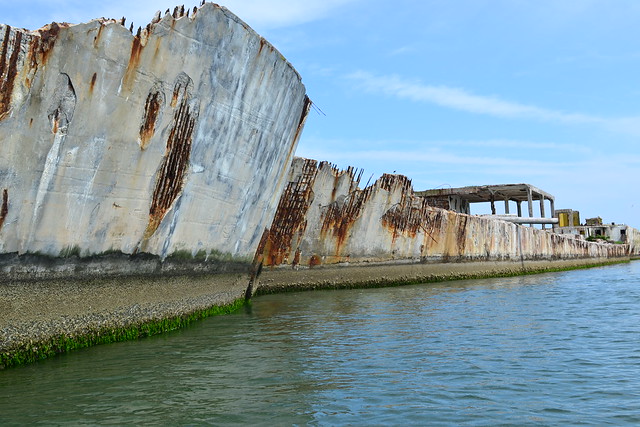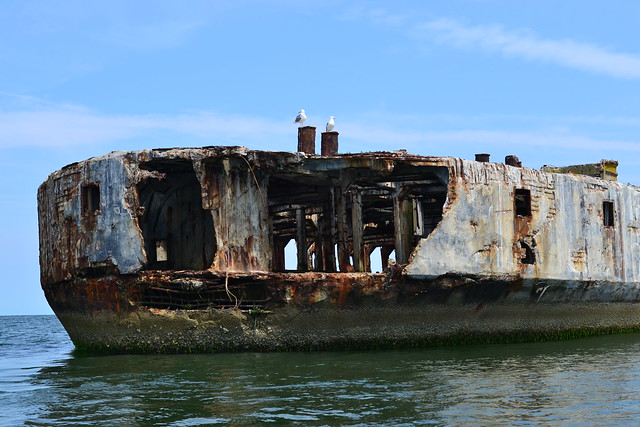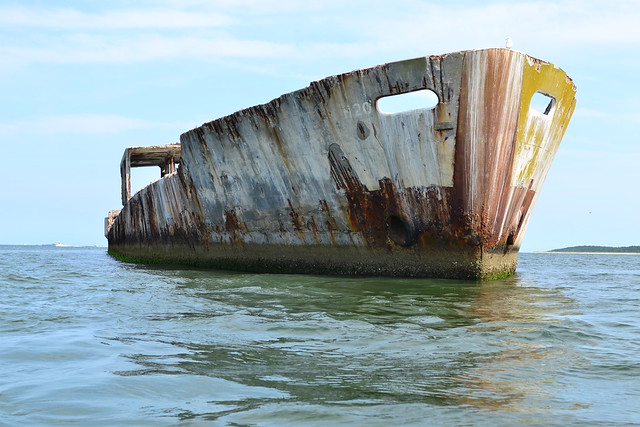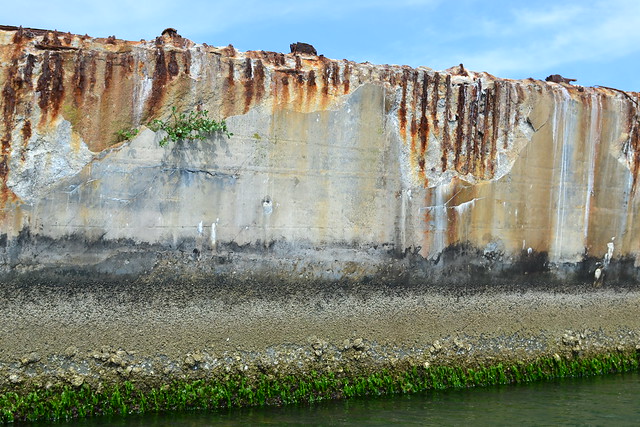Read Our Blogs
Kiptopeke's Breakwater
Learn about the famous Kiptopeke State Park breakwater.
Perhaps one of Virginia State Parks' most recognizable features, few people are familiar with the impressive history of the 100-meter long concrete ships.

The US Maritime Commission ordered the ships in 1942 during a steel shortage brought on by the second world war. Steel was scarce, but concrete was inexpensive and readily available. The contract was awarded to McCloskey and Co. and construction began in July of 1943 in Tampa, FL. All in all, two dozen concrete ships were built and served throughout WWII. Two of the ships even saw combat missions. The S.S. David O. Saylor and the S.S. Vitruvius made their way to England in support roles preparing for D-Day, and then sailed to the shores of Normandy where they were sunk as part of the artificial harbor and docks to transport supplies ashore. Their hulls remain underwater there today. The nine ships that make up the breakwater at Kiptopeke all served as transport and training vessels in the South Pacific.

After the war ended and the ships made their way to domestic ports, nine were scuttled in 1948 to protect the booming Little Creek-Cape Charles Ferry terminal. At one point, it was thought that Kiptopeke would develop to the scale of Cape Charles, but when the Chesapeake Bay Bridge-Tunnel was completed in 1964, a vehicle ferry was no longer needed, and ridership quickly fell off. The ferry terminal at Kiptopeke was closed, and the ferries were moved further north to Delaware, where they were in higher demand.

The breakwater at Kiptopeke remains undisturbed mainly by time and protects the beach and pier now owned by Kiptopeke State Park. In the summer, kayak rentals are available through the park, and boaters can paddle out and around (but not between) the ships.

To learn more about the concrete ships, check out these sources referenced below.
Concrete Ships | Wikipedia | Atlas Obscura
Click here to learn more about Kiptopeke State Park on Virginia's Eastern Shore to help plan your visit. The park offers two and three-bedroom cabins, six-bedroom lodges, RV and tent camping, a yurt (part cabin-part tent), and a bunkhouse.
Guests also enjoy the park's boat ramp, lighted fishing pier, picnic areas, 5.1 miles of hiking and biking trails, playground, beach bathhouse and swimming beach. Seasonal interpretive and educational programs focus on natural history, birding and bay ecology.
If you have read the article and have a question, please email nancy.heltman@dcr.virginia.gov.
Search for blogs
By Park
Categories
Cabins
Camping
Fishing
History and Culture
Other
Programs and Events
Trails
Volunteers
Water Fun
Archive
2025
2024
2023
2022
2021
2020
2019
2018
2017
2016
2015
2014
2012













